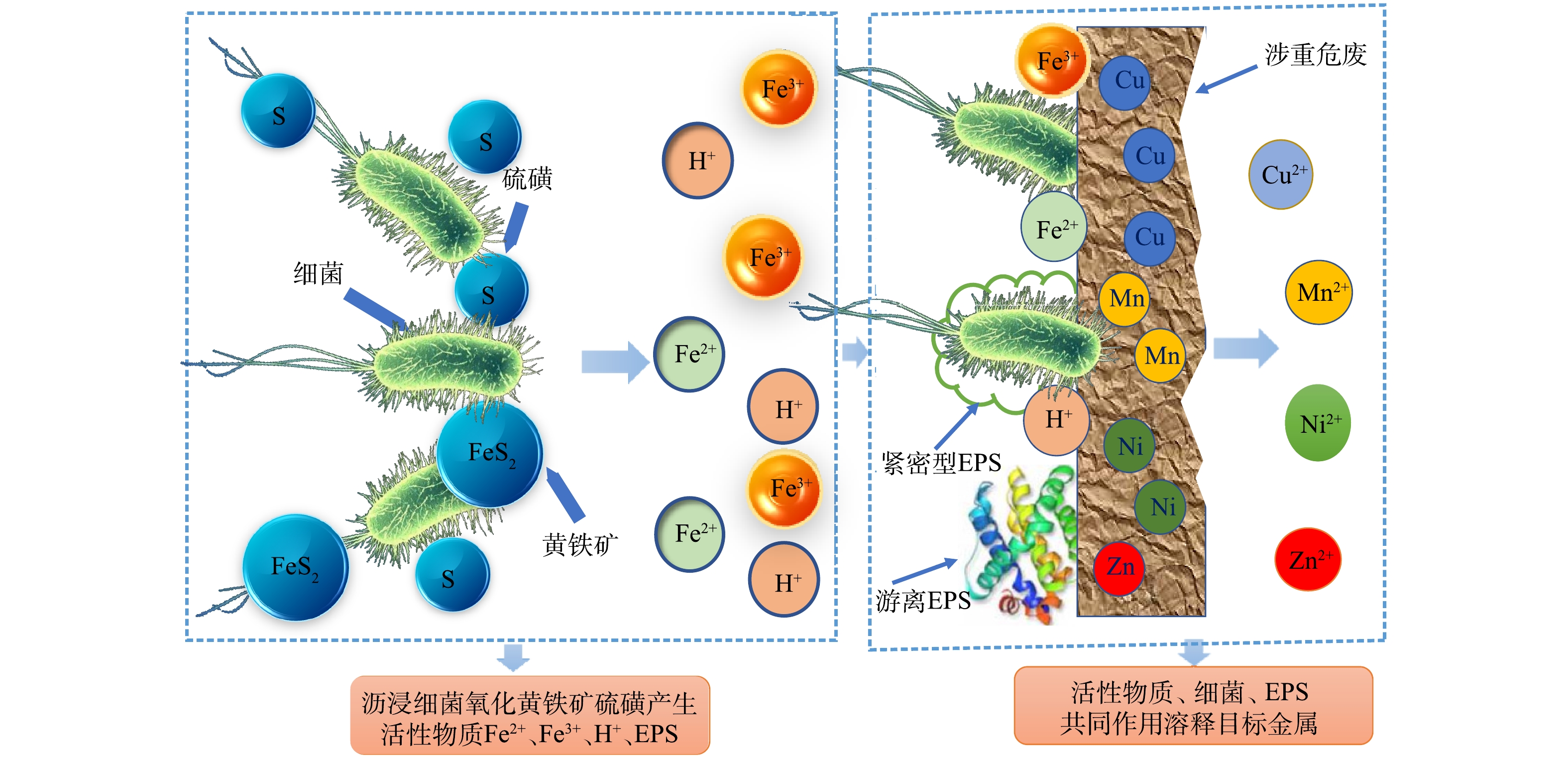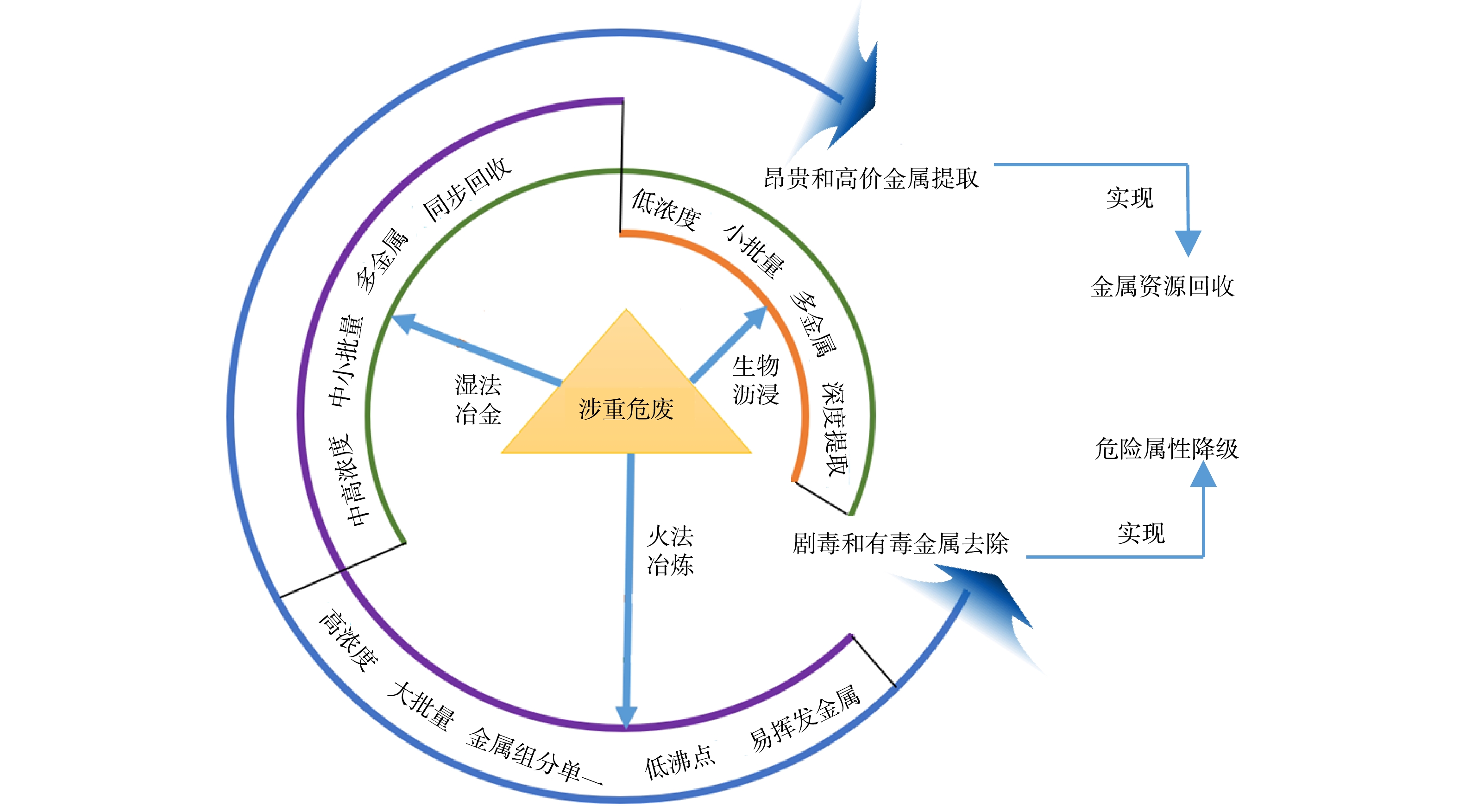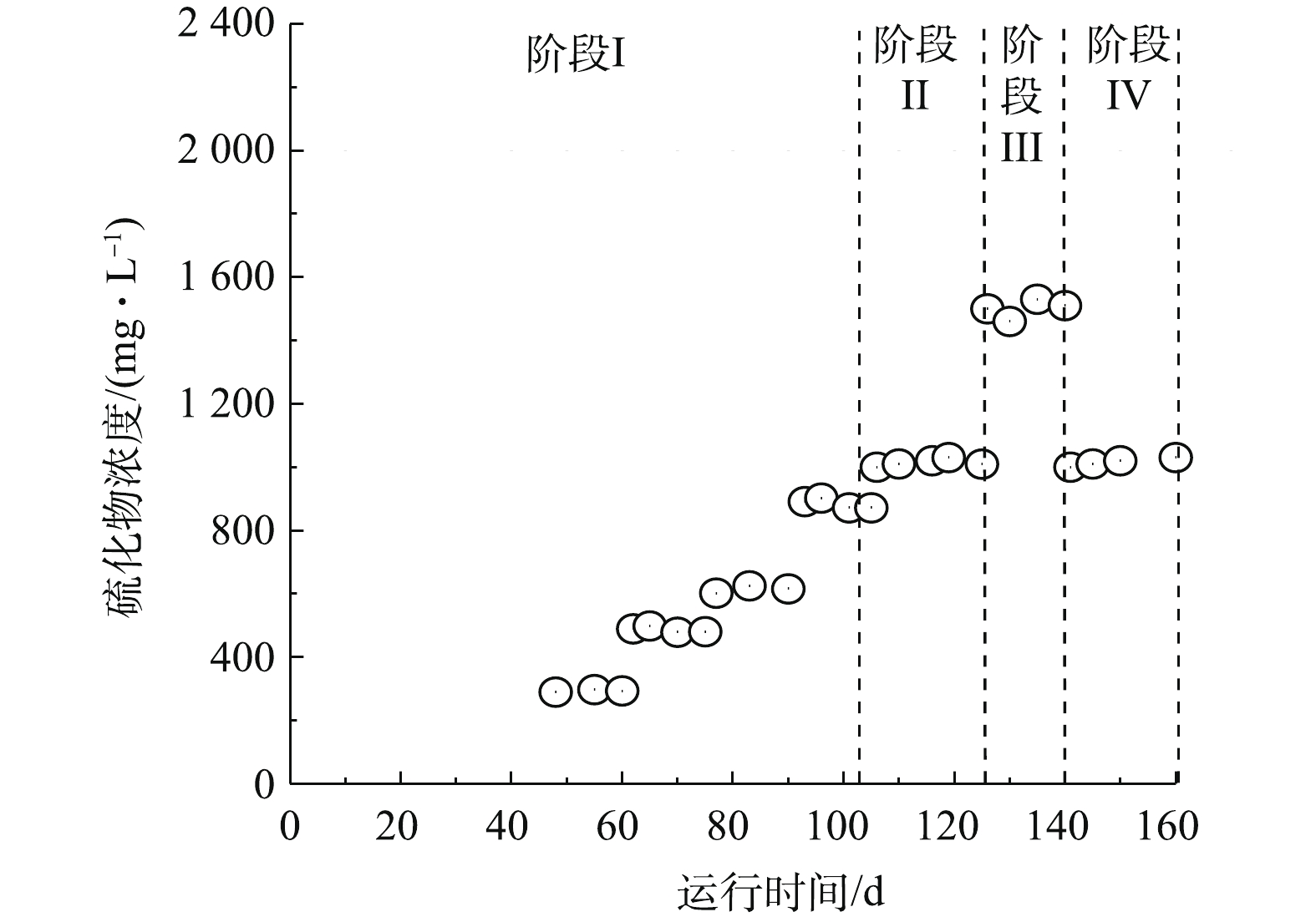-
活性染料具有颜色鲜艳、均染性好、应用简便、染色牢度高、价格低廉等特点,是我国染料工业中第2大类染料品种[1]。对位脂(对氨基苯基-ß-羟乙基砜硫酸)含有重氮化组分的氨基和能发生化学反应生成染料-纤维共价键的反应性基团,能大大提高染料的利用率,所以成为活性染料最重要的中间体,市场需求更为庞大[1-2]。目前国内对位酯产量约为1.6×105~1.8×105 t·a−1。但是生产1 t对位脂要产生30 t的废水,同时这些废水COD浓度高,可生化性差[3],因此,高效处理对位酯生产废水具有很重要的实际意义。已有研究[3-4]表明,采用Fenton-水解酸化-好氧组合工艺和铁碳微电解-Fenton-光催化联合工艺,能去除大部分的COD;但是Fenton反应作为预处理,过氧化氢和酸碱试剂消耗成本太高。在工程实践中,处理高浓度难降解有机废水时,使用厌氧工艺作为前端处理工艺,具有沼气可回收利用、可提高废水的生化性及可降低运行成本等特点。由于对位脂生产废水含有大量的硫酸盐(COD/
SO2−4 为3.58),同时对位酯属于有机硫化合物,其含有磺酰基和硫酸盐基团,容易水解(结构式见图1),因此,也间接地增加了进水硫酸盐的负荷,使COD/TSO2−4 (总硫酸盐)降至2.4。有研究[5]表明,在进水COD/SO2−4 >3.3(碳硫比>10)时,产甲烷菌不会受硫酸盐被还原时所产生硫化物的抑制,这也是厌氧工艺在工程应用的基本条件。已有研究[6]采用单一的厌氧复合床处理该废水,只能运行到COD至15 000 mg·L−1,对应COD容积负荷为5.0 g·(L·d)−1,如进一步提高COD至20 000 mg·L−1,产甲烷和反硝化能力完全丧失。本研究利用微电场-零价铁,来提高UBF处理高硫酸盐和高有机硫废水中的运行负荷及同步产甲烷和反硝化的能力。结果表明,同步产甲烷反硝化过程具有一定的经济可行性,能为后续的硝态氮去除工艺减轻负担。
全文HTML
-
微电场-零价铁-UBF实验装置及工艺流程如图2所示。其中,复合床有效容积为6 L,材料为聚氯乙烯,内径和外径分别为100 mm和140 mm,高为80 mm。复合床下部是厌氧污泥区,污泥区上部安装有弹性填料。中部是铁区,填充的是铁刨花,电源阳极通过多个铜线和中部铁区相连,以多孔不锈钢盘作为阴极放在铁区和弹性填料中间。在工程上,补充铁粉的途径有2种:第1种方式是将铁粉和污泥混合,由潜污泵从厌氧罐底粉和罐内污泥充分混合;第2种方式是通过顶部的三相分离器投加,同时打开内循环泵,使铁粉和罐内污泥充分混合。为防止铁区与阴极直接接触引起的短路,不锈钢盘上部安装有塑料托盘和PVC球,起绝缘作用。本研究采用的是复合床的设计,弹性填料起截流污泥的作用,因此,厌氧污泥不会黏附在钢盘上。产生的沼气经过反应器上部的三相分离器,通过洗气瓶里面的3 mol·L−1氢氧化钠吸收H2S和CO2,然后再经过装有碱石灰的干燥管以吸收水蒸气,最后使用湿式流量计进行测量。废水经蠕动泵依次进入反应区、铁区、复合床底部,从而实现微电场-零价铁-UBF耦合过程。在整个反应期,利用恒温循环水浴箱控制复合床水温在35 ℃左右。回流蠕动泵回流比控制在400%左右。
-
实验进水为山东某化工厂2018年1月对位脂生产车间的出水。原水pH在7.0左右,COD约为35 000 mg·L−1。原水硫酸盐约为9 770 mg·L−1,COD/
SO2−4 约为3.58,有机硫约为4 788 mg·L−1(按硫酸盐计),所以加上有机硫水解产生的硫酸盐,原水COD/TSO2−4 可降低至2.4。同时,检测到原水中硝态氮的含量约为77 mg·L−1。在实验中,进水硫酸盐浓度的变化是通过人工投加Na2SO4(分析纯)的方式来调节的。进水碱度按1.0 g COD投加0.3 g NaHCO3(工业级)的比例调节。厌氧反应器种泥的接种体积为3 L,种泥来自厂区附近工业园区污水处理厂的絮状干泥(含水率为80%), VSS约为20.2 g·L−1。不同阶段废水水质学参数及COD容积负荷见表1。 -
为期160 d的实验分4个阶段运行,阶段划分见表1。在运行过程中,微电场的电压设为0.5 V。前30 d,污泥驯化完成后,向复合床投加铁刨花100 g。因为运行过程中铁刨花不断被消耗,故每隔30 d补充50 g。进水COD用去离子水来稀释成要求的COD(见表1)。在整个实验过程中,每天进水为2 L,HRT为3 d。在第Ⅰ阶段,通过逐步提高进水COD来提高容积负荷,考察复合床的运行情况。第Ⅱ阶段,加入4 420 mg·L−1硫酸盐,使COD/
SO2−4 降低至2(COD/TSO2−4 =1.57),继续考察降低碳硫比对复合床产甲烷量的影响。第Ⅲ阶段,继续加入10 000 mg·L−1硫酸盐,使COD/SO2−4 降低至1(COD/TSO2−4 =0.88)。第Ⅳ阶段,COD/SO2−4 恢复至第Ⅱ阶段,考察复合床系统恢复能力。 -
COD、pH、VFA(以乙酸计)、硫化物、总硫和有机硫含量的测定均参考文献中的方法[6]。产生的甲烷体积由湿式流量计(LML-1型,青岛科迅电子有限公司)来计量。硫酸盐和硝态氮含量的测定均采用离子色谱法(戴安离子色谱仪DIONEX, ICS-2100)。对位酯含量的测定采用反向离子抑制色谱法。具体色谱分析条件如下:色谱柱为Agilent公司的Zorbax Extend-C18 (150 mm×4.6 mm, 5 µm);柱温设为室温;流动相水与甲醇的体积比为38∶62;pH调整为3.5;进样量为20 µL;流速为1.0 mL·min−1;检测波长为254 nm[7]。在对位脂浓度为1~20 mg·L−1时建立标准曲线(R2 =0.999)。
1.1. 实验装置
1.2. 污水及其来源
1.3. 实验步骤
1.4. 分析方法
-
在第Ⅰ阶段(1~105 d),运行参数见表1。这个阶段COD/
SO2−4 为3.58(COD/TSO2−4 为2.4)左右,通过提高进水COD的方式来逐步提高OLR(图3)。前30 d是污泥驯化阶段,所以进水COD为500 mg·L−1(OLR为0.167 g·(L·d)−1)。可以看出,在初始COD为2 000 mg·L−1,OLR为0.67 g·(L·d)−1的条件下,COD的去除率高达82%,产甲烷率为0.18 L·(L·d)−1。逐步提高进水COD至15 000 mg·L−1(OLR为5.0 g·(L·d)−1),COD的去除率亦达74%,产甲烷率为1.23 L·(L·d)−1,对位脂的去除率为83% (图3和图4)。此时进水硝态氮约为33 mg·L−1,出水硝态氮为3.2 mg·L−1,反硝化率为90.3%(图5)。进水COD提高至20 000 mg·L−1(OLR为6.67 g·(L·d)−1)时,虽然COD/TSO2−4 只有2.4左右(远低于3.3),但COD的去除率仍能高达70%,产甲烷率依然能达到1.41 L·(L·d)−1,对位脂的去除率为74%(图4),反硝化率为87%(图5)。在采用单一的UBF来处理对位脂生产废水的研究[6]中,系统中进水COD最高为15 000 mg·L−1,即OLR为5.0 g·(L·d)−1。当进水COD升高至20 000 mg·L−1时,硫酸根的浓度为5 583 mg·L−1,有机硫为2 286 mg·L−1,复合床系统很快受到严重抑制,甲烷产气很快停止,反硝化能力丧失,出水pH降至6.0。零价铁的加入明显提高了厌氧复合床在高COD运行负荷下产甲烷和反硝化的能力。零价铁能大幅提高厌氧反应器的处理效果是由多方面原因的协同作用造成的。零价铁能显著降低厌氧反应器内的氧化还原电位,中和有机酸,促进厌氧还原氛围,从而有助于厌氧微生物的生长[8]。最近的一组对比研究表明,零价铁不仅使厌氧古菌的丰度大幅提高,也增加了厌氧反应器中微生物的多样性[9]。此外,阴极产生的H2能作为产甲烷菌、硫酸盐还原菌和硝酸盐还原菌的电子供体[10]。这些都为提高产甲烷和反硝化的能力提供了基础。加入的零价铁在厌氧消化环境中还能缓慢产生Fe2+,而Fe2+能有效压缩胶体污泥的双电层,降低Zeta电位,进而促进污泥颗粒化[11]。同时,铁作为还原剂也能直接作用于某些污染物,所产生的Fe(OH)2、Fe(OH)3胶体也能沉淀污染物[12]。有研究[13]表明,采用零价铁强化厌氧工艺处理垃圾渗透液,COD的去除率达65.1%,而未加铁体系的COD去除率只有48.2%。微电场的作用一方面是能刺激微生物的代谢,另一方面是能强化零价铁的表面反应,有效解决零价铁床的板结和钝化[14]。最近的研究[15]表明,微电场-零价铁强化UASB能显著提高处理3, 4, 5-三甲氧基苯甲醛生产废水能力。本研究采用复合床设计,安装的弹性填料能拦截大部分的污泥,可避免零价铁床层被覆盖而导致的零价铁失活。 -
在第Ⅱ阶段(106~125 d),保持进水COD 20 000 mg·L−1不变(即COD容积负荷不变),加入4 420 mg·L−1硫酸盐,使COD/
SO2−4 降低至2(图6),此时COD/TSO2−4 降低至1.57,产生的硫化物(以S-SO2−4 计)为1 000 mg·L−1(图7)。但这个体系中COD的去除率依然能稳定在60%,产甲烷率为1.21 L·(L·d)−1,反硝化率为79%(图4)。所投加的零价铁能起到去除部分硫化物的作用,从而降低硫化物对产甲烷菌的抑制[16]。本实验中COD/TSO2−4 为1.57,这远远低于COD/SO2−4 >3.3(碳硫比>10)的厌氧工艺要求的极限。最近的研究[17]表明,在COD/SO2−4 为0.5时,单一的UASB依然取得了满意的COD去除率和甲烷产率。但是,UASB所处理的是很容易生物降解的乙酸和乙醇混合废水,不能代表典型工业废水。在第Ⅲ阶段(126~140 d),继续加入10 000 mg·L−1硫酸盐,使COD/SO2−4 降低至1.0(COD/TSO2−4 =0.88),硫化物(以S-SO2−4 计)达到1 580 mg·L−1,产生的硫化物对产甲烷菌和硝酸盐还原菌产生了中等程度的抑制,出水pH和产甲烷率持续下滑,VFA大幅提高至3 600 mg·L−1(见图3),而反硝化率只有25%(图4)。在第Ⅳ阶段,COD/SO2−4 恢复至第Ⅱ阶段,在7 d内,系统产甲烷率和反硝化能力基本恢复,说明微电场-零价铁-UASB反应器系统在产生高硫化物条件下也有很强的恢复能力。值得关注的是,虽然一直有硫化物的产生(见图6),但出水中的硫酸盐浓度却一直高于进水(见图5),这是由于对位脂中的有机硫容易水解而产生额外的硫酸盐。另外,在整个运行过程中,出水pH一直比进水pH高(见图2),这是因为硫酸盐还原菌在还原硫酸盐的过程中以及硝态氮在反硝化过程中会产生一定的碱度[14, 18]导致的。
2.1. 提高容积负荷对复合床同步产甲烷反硝化能力的影响(阶段Ⅰ)
2.2.
COD/TSO2−4![]()
![]()
浓度对复合床同步产甲烷反硝化能力的影响(阶段Ⅱ~阶段Ⅳ)
-
1)实验结果表明,在原水COD/
SO2−4 约为3.58(COD/TSO2−4 低至2.4)时,即使进水COD高达20 000 mg·L−1 (OLR为6.67 g·(L·d)−1),耦合复合床体系的COD去除率也能达到70%,相应的产甲烷率达1.41 L·(L·d)−1,反硝化率达87%,对位脂降解率达74%。2)第Ⅱ阶段实验结果表明,联合系统能忍受更低的碳硫比,在COD/
TSO2−4 低至1.57时,系统依然能够稳定运行。3)第Ⅲ和第Ⅳ阶段实验表明,在COD/
TSO2−4 降低至0.88时,产甲烷菌受到中等程度的抑制;COD/TSO2−4 恢复至1.57后,耦合复合床系统展示了很强的恢复能力,在5 d后即恢复正常。












 下载:
下载:



















